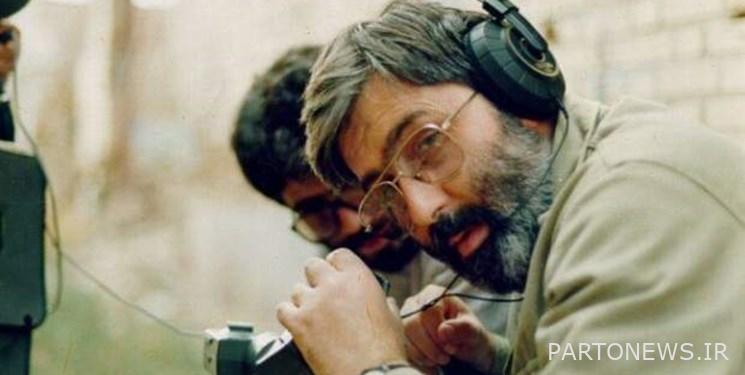Ammar Film Festival From the end to the good in the style of “Agha Morteza” to the narrative of colonialism

According to Fars News Agency, the fourth day of showing the works of the 12th Ammar People’s Film Festival has started today in Palestine Cinema in Tehran. On this occasion, we have dealt with three documentaries: “The Wall Painter” directed by Mohsen Aghaei, “Sculptures made of soil” directed by Sajjad Goodarzi and “Agha Morteza” directed by Seyed Abbas Seyed Ebrahimi, which will be screened today at the Ammar Film Festival.
In the following, we will examine three documentaries: “Wall Painter”, “Sculptures made of soil” and “Mr. Morteza”.
“Wall-painting”; Are the problems of the youth only economic?
The documentary “The Wall Painter” was made by Mohsen Aghaei, according to him, in the continuation of “Exonami”. In response to a question from Amir Hossein Sabeti on the “Jahan Ara” program, when he asked: “Mr. Sir, do you think that if the economic obstacles and problems facing young people in marriage are removed, these issues will be resolved on their own?”
A man is not convinced by his own confession in the answer he gave in Jahan Ara program, and in order to find a stronger answer, he has started making his second documentary called “The Wall Painter”. However, the director’s goal, he admits, is to examine the relationship between sexual issues and economics, politics, and even statehood.
But halfway through, the gentleman confuses the documentary “The Wall Painter.” As if he remembers what question he started his film with! He who is trying to find traces of sexual attraction in the events of November 1998, in the success or failure of the tenth presidential election campaign and similar events; But as the film progresses, it deviates from this goal, and although it still keeps the audience engaged in the main issue with images of youth dancing in the streets, its conversations with political figures from previous governments confuse the viewer, so that in some places the audience even feels The subject of the documentary is the existing differences between the Iranian political factions and the role that the phenomenon of gender attraction plays in this.
The “mural”, unlike the “exonami”, does not have a strong framework; But a gentleman with a skill in attractive and humorous narration, tries to get the audience to the end of the film and succeeds in this. In spite of all this, it should be said that what can be deduced from the study of Mr.’s works shows that he is a documentary that awaits a bright future.
Colonization changes from one form to another
The main focus of the documentary “Sculptures of Soil” is the narrative of the formation of colonialism in the world. The author of the text has done careful research to write the text. The story of the film begins with the statue of Christopher Columbus being torn down by the people of the East Coast of America, and the subsequent scenes are flashed back to 500 years ago, when Christopher Columbus discovered America and the story continues.
The invasion of Portugal and Spain under the pretext of discovering new lands and trying to rule over those lands and, consequently, ownership of their entire existence is seen. Portugal and Spain divided all those lands and “European colonization” took shape.
The colonizers knew well that in order to have sovereignty over those countries, they had to enslave the people. After the conquest of each new country, they erected a statue of the colonial leaders on the highest point of the cities so that the colonized people would know who their leader was. In the continuation of the film, the beginning of anti-colonial struggles and the efforts of intellectuals and patriots to get rid of colonialism and achieve independence are narrated.
The colonialists came to the conclusion that in order to consolidate their rule, they had to declare themselves the superior race and instill this in the people, and to prove this, they also used scientific hypotheses to have an excuse for slavery.
The colonialists want to divide the world among themselves, and at this time World War I and the aftermath of World War II begin. In the meantime, there is a reference to the arrival of British colonizers in Iran and the struggles of the people of the south of our country in World War II. An unequal war that opens the door to British colonialism in our country.
The interesting thing about this documentary is that in different eras, the form of colonialism changes and the anti-colonial struggles, led by anti-colonial fighters, become more and more organized. The message at the end of the film also points to a very beautiful and correct point: throughout history, many sculptures have been made by different people; But only the statues of people who fought against colonialism and brought independence to their homeland remain.
The director has used very good and quality visual resources in this work, the precise characterization of the colonialists and anti-colonial fighters, and the direct directing and editing have made this documentary more productive and spectacular, and also the choice of the film’s name is very smart. This documentary is one of the best documentaries made in the field of explaining colonialism and anti-colonial struggles.
Good luck in the style of “Mr. Morteza”
To introduce the martyrs to the society, to highlight only the positive points of the martyr’s personality is one of the common plagues of compiling the biography of the martyrs. The plague that causes the sanctification of the martyrs and finally we come to the phrase “Where are we and where are the martyrs!” And by doing so, we officially take the martyrs out of the reach of society as a model, and they become pure and perfect human beings that we just have to look at and grieve.
But on the other hand, if we came to compensate for this weakness, we would only deal with the gray or black areas of the lives of the martyrs, and here we will be exposed to two harms; Either that attribute is “normalized” in the eyes of the people because of the greatness of the martyr, or it causes the destruction of the martyr himself. The only solution is “realism”.
I remember the margins of the broadcast of the documentary “Mr. Morteza” on National TV; Protest and even denial of the martyr’s family against parts of the documents and answers of the Awj organization.
Although I believe that this documentary is not unlucky in some parts of the second type of plagues, but I consider the majority of the objections to be related to the first plague, which is “sanctification”. For example, if we say that someone was a good and revolutionary person from birth, it is more effective, or if we say that this person was not on the way from the beginning, but despite all his weaknesses, because he was a free and thoughtful man, he finally found his way and lost his life. He sacrificed in this way and this thinking and freedom eliminated his weaknesses and shortcomings. Of course, it was not necessary for the manufacturer to show the cigarette as an integral part of Mr. Morteza’s character from the first minute, and in this regard, I only mean the scenes that have been made. This is almost certainly the strongest weakness.
It seems that the aim of the author of the work is the same as I said in the example, and that is why not much attention has been paid to the character after the revolution of Martyr Avini, and this is what the late Safaei Haeri said: . »
* Cinema and theater group suggested news
End of message /
You can edit this post
Suggest this for the front page
.

